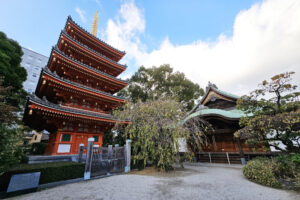In the heart of Japan’s rich cultural tapestry, two traditional theatres stand out for their unique storytelling, aesthetic appeal, and historical significance: Kabuki and Noh. While both forms are cornerstones of Japanese culture, they offer contrasting experiences to their audiences. Kabuki, known for its vibrant spectacle, and Noh, celebrated for its refined subtlety, are more than just performances; they are gateways to understanding the depth of Japanese tradition and values. This article delves into the fascinating worlds of Kabuki and Noh, exploring their origins, aesthetic differences, narrative styles, and the enduring legacy they hold in the modern world.
Kabuki vs. Noh: Unraveling Japan’s Theatre Gems
Kabuki and Noh theatres are brilliant embodiments of Japan’s dedication to preserving its cultural heritage. Originating in different periods, they have evolved to represent the dynamism and the contemplative aspects of Japanese arts. Kabuki, with its elaborate makeup, costumes, and dramatic storytelling, contrasts sharply with the minimalist elegance and symbolic narratives of Noh. While Kabuki appeals to the senses with its spectacle, Noh captivates the soul with its depth. The juxtaposition of these forms highlights the diversity of Japanese theatrical traditions and the richness of its cultural expressions.
The Origins of Kabuki: A Vibrant Evolution
Kabuki theatre emerged in the early 17th century, founded by Izumo no Okuni, a woman who began performing a new style of dance drama on the dry riverbeds of Kyoto. Initially, these performances were all-female ensembles, often dealing with themes of love and social commentary. However, due to concerns over public morality, women were banned from performing, leading to the emergence of young male actors, and eventually, the all-male casts seen today. Throughout its history, Kabuki has been synonymous with spectacle, incorporating stunning costumes, revolving stages, and trapdoors to create a mesmerizing experience for its audience.
Noh Theatre: A Journey Through Time
Noh theatre is a world apart from the flamboyant displays of Kabuki. Originating in the 14th century, Noh was developed by Kan’ami and his son Zeami. It is the oldest surviving form of Japanese theatre and is characterized by its minimalist stage, use of masks, and slow, deliberate movements. Noh performances are highly stylized, focusing on themes of tradition, spirituality, and the ephemeral nature of existence. The art form was initially associated with the samurai class and has maintained its refined, austere aesthetic over centuries, offering a window into the philosophical and artistic inclinations of medieval Japan.
Aesthetic Distinctions: Kabuki’s Flamboyance Meets Noh’s Subtlety
The visual and performative elements of Kabuki and Noh theatres underscore their aesthetic divergences. Kabuki is a feast for the eyes, with its bold makeup, extravagant costumes, and elaborate sets designed to transport the audience into the heart of its stories. In contrast, Noh’s beauty lies in its simplicity and the use of symbolic props and masks to suggest rather than depict. The restrained movements in Noh are designed to evoke a deeper emotional resonance, relying on the audience’s imagination and empathy to fill the spaces between the lines.
The Art of Storytelling: Narratives in Noh and Kabuki
In terms of narrative, Kabuki and Noh diverge in their approach to storytelling. Kabuki plays often revolve around historical events, moral conflicts, and love stories, with an emphasis on action, spectacle, and the extraordinary. Noh, however, tends towards more introspective themes, exploring the internal landscapes of its characters, and often blurring the lines between the living and the spectral, the present and the past. The slow pace and poetic language of Noh require a different kind of attention from its audience, inviting contemplation and introspection.
The Role of Music and Dance in Kabuki and Noh
Music and dance play integral roles in both Kabuki and Noh, yet they manifest distinctly in each form. Kabuki music is dynamic and integral to the drama, featuring shamisen (a three-stringed musical instrument), drums, and flutes, accompanying lively dances and dramatic scenes. Noh music is more restrained, with the small ensemble of musicians and chorus providing a haunting backdrop to the meditative dances performed by the actors. The dance in Noh is symbolic, often representing the transformation or the emotional journey of the characters.
Costumes and Masks: The Visual Splendor of Japanese Theatre
The visual elements of Kabuki and Noh are among their most distinctive features. Kabuki costumes are lavish and colorful, reflecting the social status, personality, and emotional state of the characters. The makeup, or kumadori, is an art form in itself, using color to signify traits and emotions. In contrast, Noh costumes are subtle and symbolic, with every detail reflecting aspects of the character’s role. Masks are used in Noh to portray age, gender, and the supernatural, serving as a transformative tool for the actors and a focal point for the audience’s contemplation.
Staging the Spectacle: How Kabuki and Noh Differ in Presentation
The staging in Kabuki and Noh theatres further illustrates their contrasting approaches. Kabuki stages are equipped with mechanisms like trapdoors and revolving platforms, allowing for dynamic scene changes and dramatic entrances. The hanamichi, a runway extending into the audience, brings the action closer to the spectators. Noh stages are simpler, with a bare platform and a painted pine tree backdrop, relying on the power of suggestion and the actors’ skill to create the scene. This minimalist staging in Noh emphasizes the internal rather than the external, inviting the audience to imagine the setting.
Gender Roles and Performances in Kabuki and Noh Theatre
Historically, both Kabuki and Noh were performed exclusively by men, a tradition that largely continues today. In Kabuki, male actors, known as onnagata, specialize in female roles, mastering the subtleties of female gestures and speech. Noh also features male actors in female roles, but the use of masks allows them to embody different genders and ages more abstractly. This gendered performance practice has deep roots in both forms, reflecting broader cultural norms and the historical context of their development.
The Global Influence of Kabuki and Noh: A Cultural Export
Kabuki and Noh have transcended their origins to become global ambassadors of Japanese culture. International tours and performances, as well as adaptations and influences in Western theatre, have introduced these forms to a broader audience. Kabuki’s visual spectacle and dramatic storytelling, alongside Noh’s profound depth and symbolic beauty, have fascinated audiences worldwide, contributing to a greater appreciation of the diversity and richness of Japanese arts.
Preserving Tradition: The Modern Struggle of Ancient Arts
In contemporary Japan, both Kabuki and Noh face challenges in maintaining their relevance and attracting new audiences. The rigorous training and strict traditions of these art forms can seem at odds with the fast-paced, digital world. However, efforts are being made to preserve these cultural treasures through educational programs, modern adaptations, and the integration of contemporary themes. These endeavors aim to keep Kabuki and Noh vibrant and significant for future generations, ensuring that these ancient arts continue to enrich the cultural landscape.
Kabuki and Noh: What the Future Holds for Traditional Theatres
The future of Kabuki and Noh lies in striking a balance between tradition and innovation. As these art forms navigate the complexities of the modern world, their ability to adapt while retaining their core identity will be crucial. By embracing new technologies, storytelling techniques, and global perspectives, Kabuki and Noh can continue to captivate and inspire, bridging the past and the present. The enduring appeal of these theatres, with their deep roots in Japanese history and culture, suggests that they will remain an essential part of the artistic and cultural conversation for years to come.
Kabuki and Noh theatres represent the elegance, complexity, and diversity of Japanese culture. Through their unique histories, aesthetic choices, and narrative styles, they offer audiences not just entertainment, but a profound engagement with the themes of human existence. As they evolve in the face of modern challenges, the global fascination with these traditional forms underscores their universal resonance. Whether through the vibrant spectacle of Kabuki or the subtle depth of Noh, these traditional theatres continue to enchant and educate, proving that even in our fast-paced, digital age, there is a timeless value in the art of storytelling.








